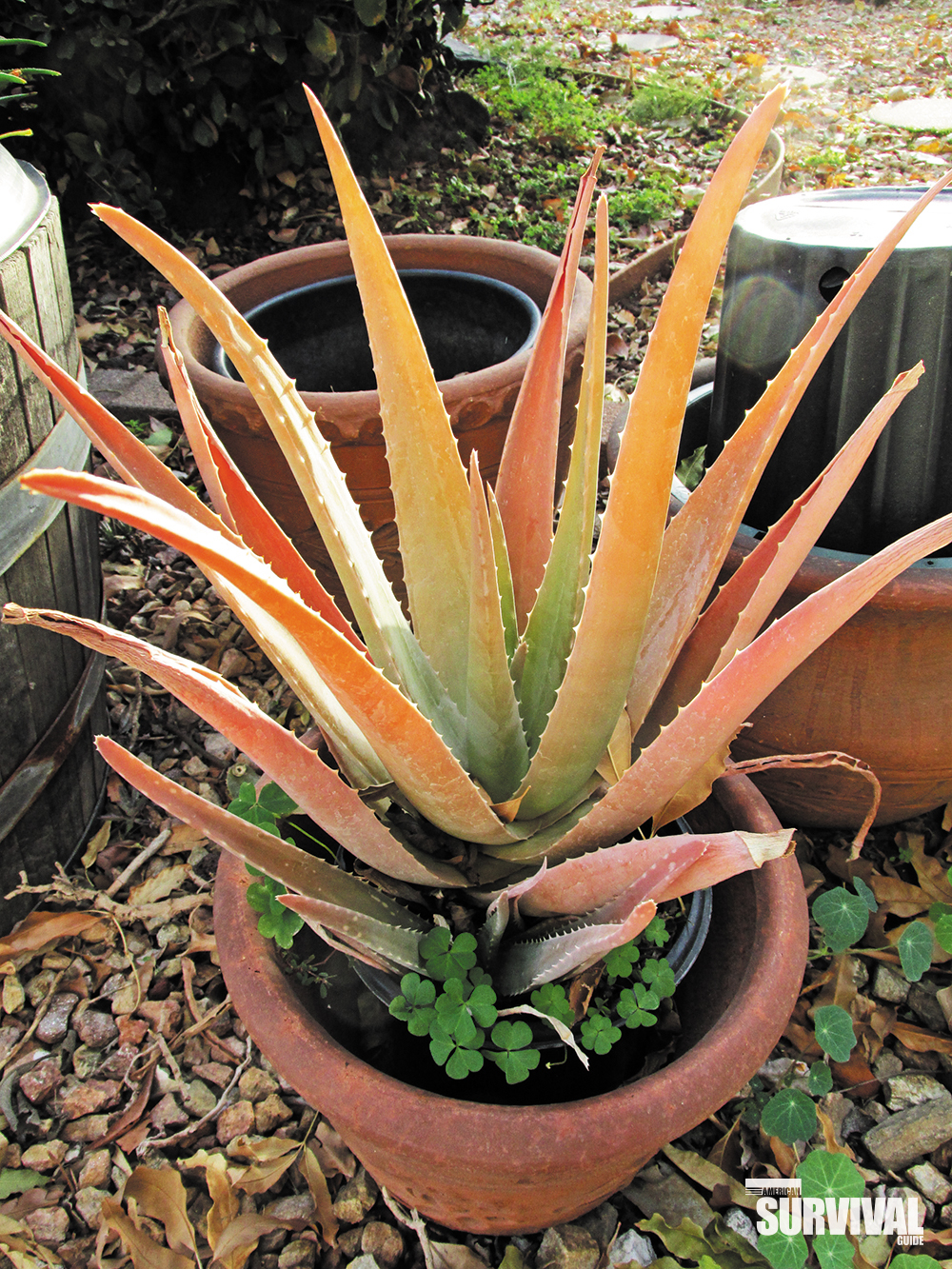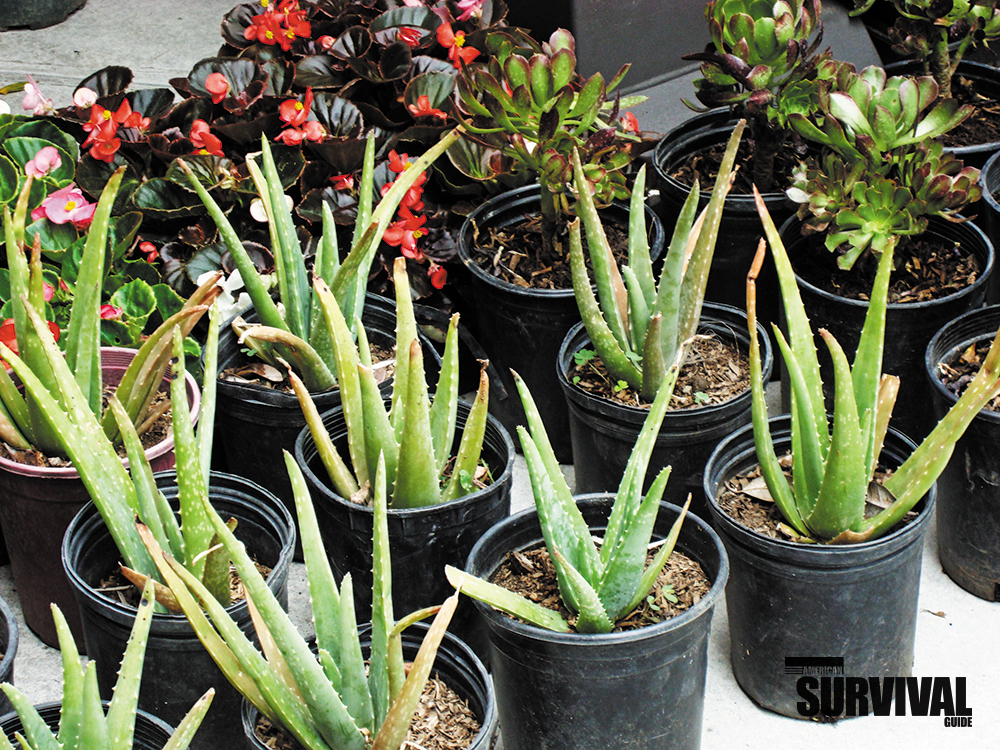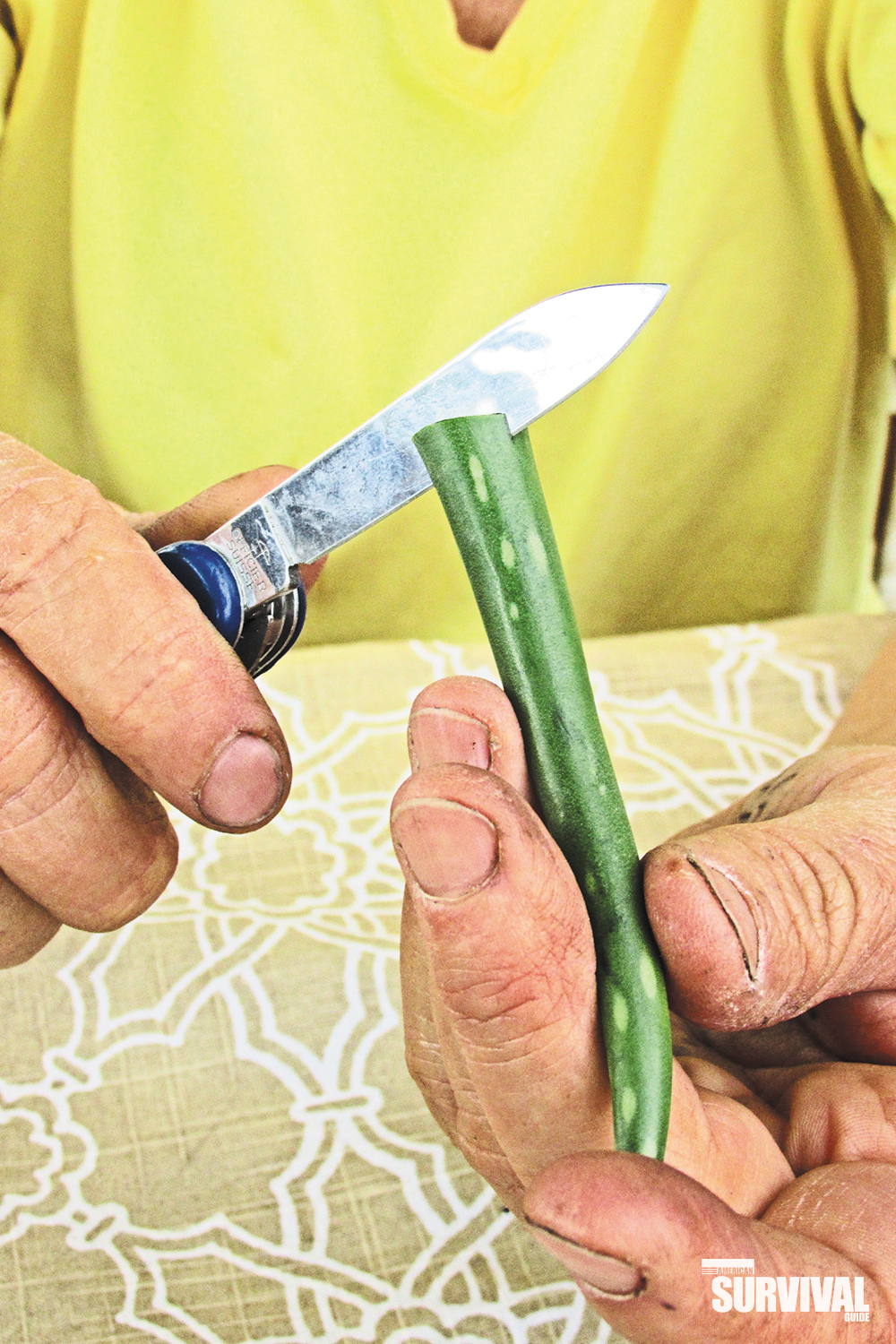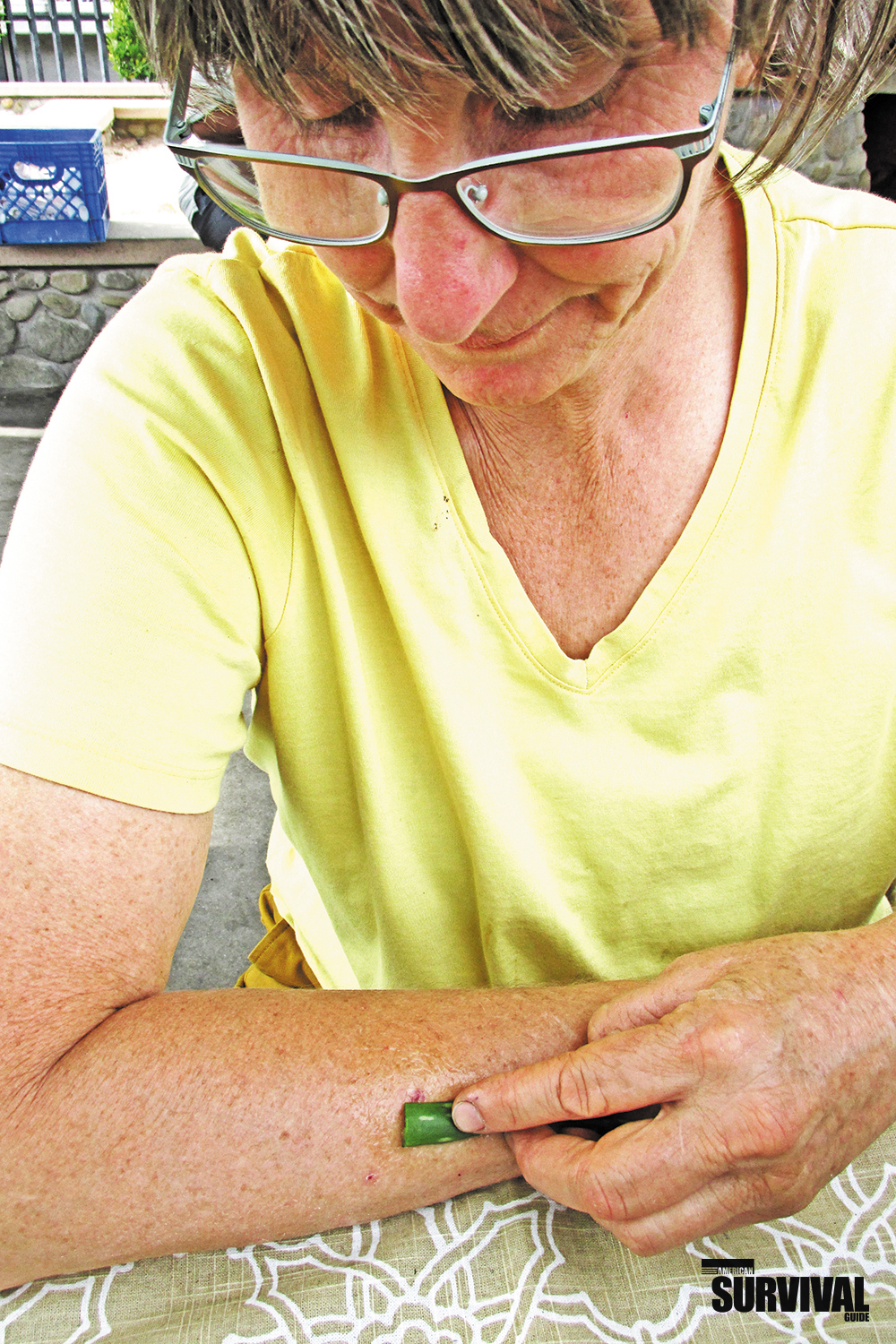IF YOU HAVE SKIN, YOU SHOULD GROW ALEO
Name: ALOE
(Aloe spp.)
Aloes are members of the Aloe genus, of which there are about 500 worldwide. Botanists classify aloes as a part of the large lily family. In general, aloes are native to Africa and the Middle East.
Description
Aloe is so commonly available today that you have probably seen one at your local supermarket. If not, every garden supply shop and nursery sells them. The leaves are formed in a rosette of fleshy succulent, lance-shaped leaves, up to a foot and longer in length, with somewhat soft spines on the margins.
The flowering stalk arises a foot or more high on leafless stalks. Most of the flowers are a shade of orange or yellow.
The most commonly known aloe is the aloe vera, meaning, “true Aloe.”
Where Found
Though not native to North America, aloes are found widely throughout the U.S. Where there is freezing weather, they will die back and should be protected. Besides being commonly grown in gardens, they can be found in remote cabin areas that have been abandoned, as they require very little maintenance to keep alive.
When to Harvest/Availability
The aloe leaves can be harvested year-round.
Uses
Aloe is primarily used as a medicine, not as a food.
PROCESSING
To treat the skin for burns, scratches, or poison oak, all that is needed is to take a leaf, cut off the margins and then split the leaf. Wipe the wet insides onto your skin, and let it dry on your skin.

MEDICINE/NUTRITION
Over the years, I have documented many of the cases where aloe is used to cure various skin conditions on people and animals. The fresh gel or juice from the leaf is put directly on the skin to treat sunburn, burns from hot oil, skin sores, diaper rash, bed sores and even poison oak rash.
The properties of aloe are a broad mix of antibiotic, astringent, pain inhibitor, emollient, moisturizer and antipruritic (reduces itching), as well as a nutrient. It works apparently because of the polysaccharides present, the main one of which is a glucomannan. Other ingredients of the aloe include aloin, galactose, uronic acids and pentoses. The miracle qualities of the aloe are not believed to be the polysaccharides alone, but the synergistic effect of these and other compounds in the leaf.
My mother, who was a registered nurse, shared with me one of her experiences with the aloe vera plants. My mother, Marie, worked at a Pasadena retirement home as the staff nurse. A housekeeper on the site complained to my mother of a hive-like condition of her skin that had been causing her to itch for about three months. She told my mother that it was “burning like fire” but she declined my mother’s offer to apply aloe to the rash. The woman preferred to have a doctor check it out, which he did within the week. The doctor prescribed Atarax (internally) for the itching and allergies, and cortisone (externally), which was applied as a cream. The doctor also prescribed tranquilizers for sleep.

After about 45 days, the woman, Lucille, told my mother that she still could not sleep at night and that the rash hadn’t improved. My mother offered once again to apply the fresh aloe to the rash, and this time Lucille said, “Yes, please, bring me anything!” My mother noted that Lucille’s skin was hot to the touch, and there were big red spots all over.
My mother applied the aloe at 7:30 a.m. She took a fresh succulent aloe vera leaf, slit it open and rubbed the gel on Lucille’s arms, legs, back, neck — almost her entire body. Lucille said her skin immediately felt better. By 3:30 that afternoon, all the visibly red spots were gone, and Lucille happily told my mother that all of the burning and itching were gone. The next day Lucille told my mother that that night was the first night she’d slept in the previous approximately 45 days.
When the doctor arrived later that day, Marie told him that Lucille’s rash had cleared up, and she admitted to having applied aloe juice. The doctor was somewhat taciturn as he examined the patient and, without commenting on the aloe, told my mother, “It’s good that the medicine finally worked.” Really?!
My mother always had a laugh retelling this story about a doctor who couldn’t see the obvious!
This is just one of hundreds of real-life examples where aloe promoted healing of the skin from various conditions.
OTHER USES
Because aloes reproduce so easily and rapidly and are so useful, these plants could be an article of trade in a situation where your everyday currency is of no value.

Advice For Growing
Aloes are easy to grow indoors, in pots, and outdoors where it does not freeze. They need well-drained soil and some sun. Each plant multiplies each season, in the same manner as a garlic bulb multiplies, and if the conditions are right, you’ll soon have enough aloes for your whole neighborhood.
Cautions
There appears to be no issue where applying the fresh juice of aloe to the skin causes any problems. In some cases, it may not cure the rash or burn, but there are no harmful side effects.
However, consuming the juice made from the aloe plant, especially if you do it yourself, could cause stomach ache or digestive pain.
One report which summarizes many studies (many performed on animals) on the efficacy and potential dangers of the use of aloe for burns, itching, ulcers, etc., is found at gov.personalcarecouncil.org/ctfa-static/online/lists/cir-pdfs/pr274.pdf.

Recipes
Remember, aloe is used more as a medicine than a food. Here is a recipe from Enrique Villasenor, assistant to Dr. James Adams (author of “Healing with Medicinal Plants of the West”).
“Agua de Nopales” (Prickly Pear Cactus Water)
- 1 cup aloe vera juice (Enrique uses prepared aloe juice purchased at the store)
- 1 prickly pear cactus pad (cleaned and rinsed)
- 1 peeled orange
- 1 apple
- 1 cup of chilled water
- Ice
- 1 lime
Place 1 cup of aloe vera juice, 1 cup of water and 1 prickly pear pad in a blender and blend. Add apple and peeled orange and blend. Add more water to taste (Enrique adds an equal amount of water to any amount of juice he makes). Serve chilled with ice. Add lime to taste. Do not add sugar. Suggested serving is 1.5 cups 2 times a day for a nutrition boost and other benefits.
About ASG’s Plant Advisor
Christopher Nyerges has been teaching ethnobotany since 1974. He is the author of “Guide to Wild Foods and Useful Plants” and other books on the uses of wild plants. Nyerges has contributed many articles to American Survival Guide on a wide range of topics. He can be reached at SchoolofSelf-Reliance.com.


